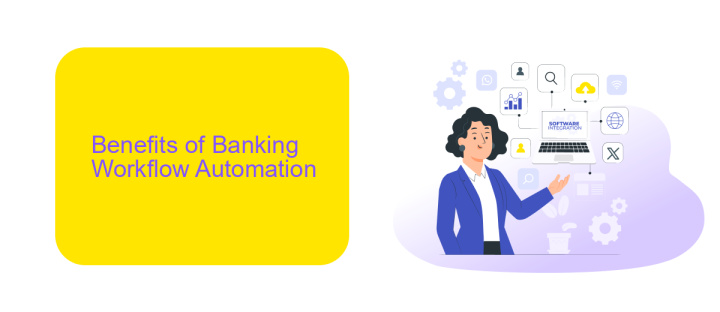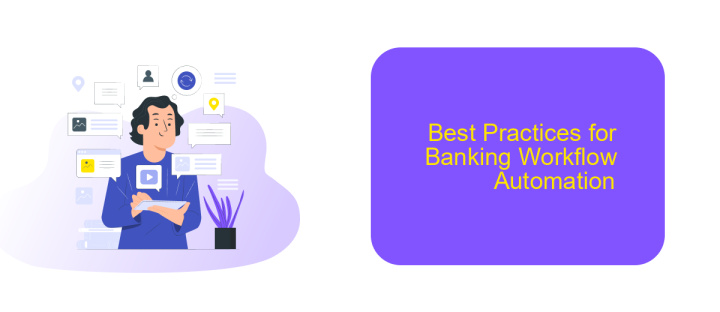Banking Workflow Automation
In the rapidly evolving financial sector, banking workflow automation has emerged as a critical tool for enhancing efficiency, reducing operational costs, and minimizing human error. By leveraging advanced technologies such as artificial intelligence and machine learning, banks can streamline complex processes, improve customer experiences, and stay competitive in a dynamic market. This article explores the transformative impact of automation on banking workflows.
Introduction
In today's rapidly evolving financial landscape, banking workflow automation has become indispensable for enhancing efficiency and reducing operational costs. By automating routine tasks and processes, banks can focus on delivering superior customer experiences and innovative financial solutions. The adoption of advanced technologies and integration services is key to achieving seamless automation.
- Increased operational efficiency
- Reduction in manual errors
- Enhanced customer experience
- Cost savings and scalability
One of the critical aspects of successful banking workflow automation is the integration of various systems and applications. Tools like ApiX-Drive facilitate this by providing a robust platform for connecting disparate systems without the need for extensive coding. This enables banks to streamline their operations and ensure that all processes are synchronized, leading to a more cohesive and efficient workflow.
Benefits of Banking Workflow Automation

Banking workflow automation offers numerous benefits, significantly enhancing operational efficiency and reducing manual errors. By automating repetitive tasks, banks can streamline processes such as loan approvals, customer onboarding, and transaction monitoring, leading to faster and more accurate service delivery. This not only improves customer satisfaction but also allows employees to focus on more strategic and value-added activities, driving overall productivity and innovation within the organization.
Moreover, banking workflow automation facilitates seamless integration with various systems and applications, optimizing data flow and ensuring real-time updates. Services like ApiX-Drive enable easy integration by connecting different software solutions without the need for complex coding, further simplifying the automation process. This connectivity ensures that all departments within a bank are synchronized, leading to better decision-making and enhanced compliance with regulatory requirements. Ultimately, banking workflow automation is a critical step towards a more agile, responsive, and customer-centric banking environment.
Challenges of Banking Workflow Automation

Banking workflow automation offers numerous advantages, yet it also presents several challenges that institutions must navigate. These challenges can impede the seamless integration and efficiency of automated systems if not properly addressed.
1. **Data Security and Privacy:** Ensuring the protection of sensitive financial data is paramount. Automated systems must comply with stringent regulations and safeguard against cyber threats.
2. **Integration with Legacy Systems:** Many banks still operate on outdated systems that are incompatible with modern automation tools. Bridging this gap requires significant investment and technical expertise.
3. **Customization and Flexibility:** Each banking institution has unique processes. Finding or developing automation solutions that are customizable and flexible enough to meet specific needs can be challenging.
4. **Employee Training and Adaptation:** Employees must be trained to work with new automated systems, which can be time-consuming and costly. Resistance to change can also hinder the adoption of new technologies.
5. **Vendor Dependence:** Relying on third-party vendors for automation solutions, such as ApiX-Drive for integration services, can pose risks if the vendor experiences issues or if the service does not fully meet the bank’s requirements.
Overcoming these challenges requires a strategic approach, including investing in robust security measures, ensuring seamless integration with existing systems, and providing comprehensive training for employees. By addressing these obstacles, banks can fully leverage the benefits of workflow automation to enhance efficiency and customer satisfaction.
Best Practices for Banking Workflow Automation

Implementing banking workflow automation can significantly enhance efficiency and reduce operational costs. To achieve optimal results, it is essential to follow best practices that ensure seamless integration and functionality.
Firstly, it is crucial to conduct a thorough analysis of existing workflows to identify areas that can benefit the most from automation. This helps in prioritizing tasks and focusing efforts on high-impact processes. Additionally, involving key stakeholders during the planning phase ensures that the automation solutions align with business goals and user needs.
- Utilize a reliable integration platform like ApiX-Drive to connect various banking systems and streamline data flow.
- Implement robust security measures to protect sensitive financial information and ensure compliance with regulatory requirements.
- Regularly monitor and evaluate the performance of automated workflows to identify areas for improvement and ensure continuous optimization.
- Provide comprehensive training to employees to ensure they are well-versed in using the new automated systems effectively.
By adhering to these best practices, banks can maximize the benefits of workflow automation, leading to improved operational efficiency, enhanced customer satisfaction, and reduced risk of errors. Continuous evaluation and adaptation are key to maintaining the effectiveness of automated workflows in the dynamic banking environment.
Future Trends in Banking Workflow Automation
The future of banking workflow automation is poised to be shaped by advancements in artificial intelligence and machine learning. These technologies will enable banks to streamline processes, enhance decision-making, and improve customer service through predictive analytics and intelligent automation. By leveraging AI, banks can automate complex tasks such as fraud detection, risk management, and personalized financial advice, thereby increasing efficiency and reducing operational costs.
Another significant trend is the integration of various banking systems and services through platforms like ApiX-Drive. This service facilitates seamless integration between different software applications, allowing banks to automate workflows without extensive coding. As a result, banks can quickly adapt to changing market demands and regulatory requirements. Additionally, the use of blockchain technology for secure and transparent transactions is expected to gain traction, further enhancing the reliability and efficiency of banking operations. Overall, these trends will drive the evolution of banking workflow automation, making it more intelligent, integrated, and secure.
FAQ
What is Banking Workflow Automation?
How does Banking Workflow Automation improve efficiency?
What types of tasks can be automated in banking?
How can banks integrate automation tools into their existing systems?
What are the security considerations for Banking Workflow Automation?
Time is the most valuable resource for business today. Almost half of it is wasted on routine tasks. Your employees are constantly forced to perform monotonous tasks that are difficult to classify as important and specialized. You can leave everything as it is by hiring additional employees, or you can automate most of the business processes using the ApiX-Drive online connector to get rid of unnecessary time and money expenses once and for all. The choice is yours!

